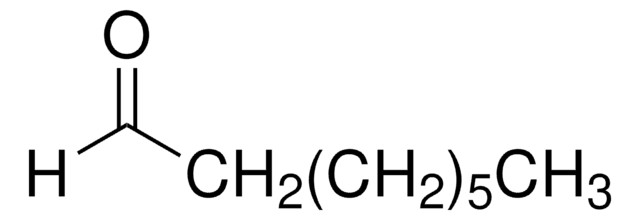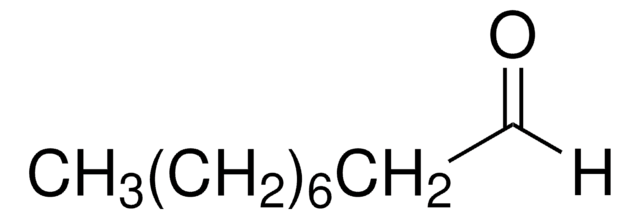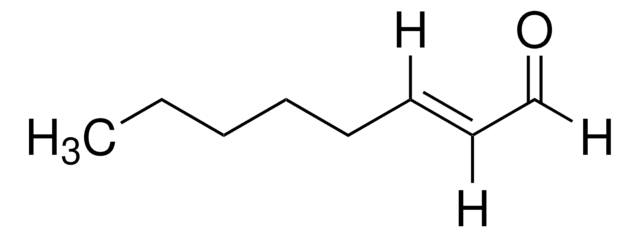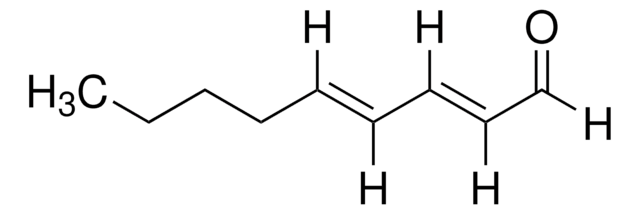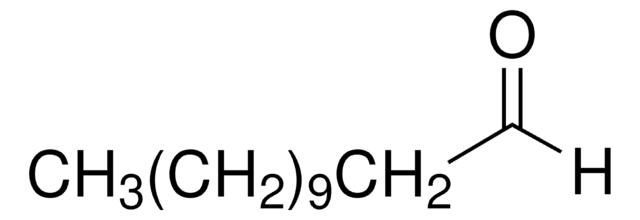W278220
Nonanal
natural, ≥98%, FG
Synonym(s):
Aldehyde C9, Nonyl aldehyde, Pelargonaldehyde
About This Item
Fragrance grade
Halal
Kosher
natural
meets purity specifications of JECFA
Recommended Products
biological source
botanical
Quality Level
grade
FG
Fragrance grade
Halal
Kosher
natural
Agency
follows IFRA guidelines
meets purity specifications of JECFA
reg. compliance
EU Regulation 1223/2009
EU Regulation 1334/2008 & 178/2002
FDA 21 CFR 172.515
vapor pressure
~0.26 mmHg ( 25 °C)
Assay
≥98%
greener alternative product characteristics
Less Hazardous Chemical Syntheses
Use of Renewable Feedstocks
Learn more about the Principles of Green Chemistry.
sustainability
Greener Alternative Product
refractive index
n20/D 1.424 (lit.)
bp
93 °C/23 mmHg (lit.)
density
0.827 g/mL at 25 °C (lit.)
application(s)
flavors and fragrances
Documentation
see Safety & Documentation for available documents
food allergen
no known allergens
fragrance allergen
no known allergens
greener alternative category
Organoleptic
fatty; fresh; green; waxy; citrus
SMILES string
CCCCCCCCC=O
InChI
1S/C9H18O/c1-2-3-4-5-6-7-8-9-10/h9H,2-8H2,1H3
InChI key
GYHFUZHODSMOHU-UHFFFAOYSA-N
Looking for similar products? Visit Product Comparison Guide
General description
Application
Other Notes
Hazard Statements
Precautionary Statements
Hazard Classifications
Aquatic Chronic 3
Storage Class Code
10 - Combustible liquids
WGK
WGK 1
Flash Point(F)
147.2 °F - closed cup
Flash Point(C)
64 °C - closed cup
Choose from one of the most recent versions:
Already Own This Product?
Find documentation for the products that you have recently purchased in the Document Library.
Customers Also Viewed
Our team of scientists has experience in all areas of research including Life Science, Material Science, Chemical Synthesis, Chromatography, Analytical and many others.
Contact Technical Service
